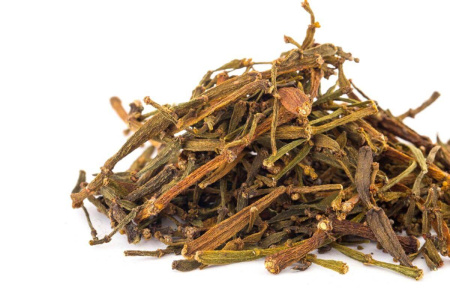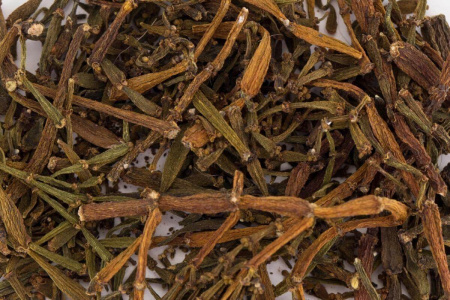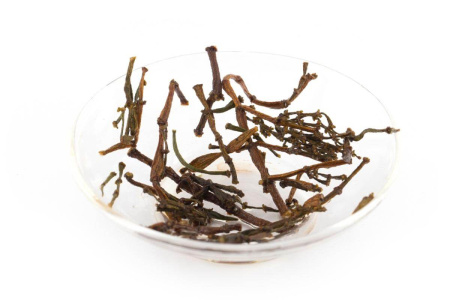Crab Feet is a perennial climbing plant that parasitizes on the trunks and branches of old tea trees over 100 years old. Tea trees, thanks to their developed root system and wood volume, draw useful micronutrients, vitamins and minerals from the ground. In turn, crab legs absorb all these useful microelements from the tea tree.
Even the ancients considered Pan Sen Jiao to be a "divine drink", considering it a real treasure. Every tea lover should at least once try these stalks, similar to crab legs, brewing separately, or adding to your favorite tea!
When dry, it has a bright, intense aroma, with hints of dried herbs baled into a haystack, reconstituted tobacco, and rustic herbal bouquets from attic storage.
Pan Sen Jiao can be consumed as a separate drink or as an additive to tea. To prepare the infusion, you will need 3-5 g of dry stems per 150 ml gaiwan. Brew by steeping, like regular tea, with water at a temperature of 85-90 °C, and you can make 7 full steeps. The first brew is traditionally not drunk. After washing, the stems open up with a sweetish aroma with notes of pharmaceutical medicinal herbs and spices at the oriental bazaar.
The taste of Pan Sen Jiao is fresh, assertive, with the sweetness of dried fruits, with notes of candied pumpkin, reconstituted tobacco leaves, warm birch sap and nuances of spices.
The infusion is perfectly transparent. The color of birch sap, smoothly turning into lemon on late infusions. The aftertaste is light, airy, with nuances of candied pumpkin, specific oriental spices and dried herbs.
Very often Crab legs are used as an additive to Puer - it is enough to add 2-3 branches. As a result of such interaction, the taste of tea becomes thicker, softer, more aromatic, sweetish, and subtle notes are more noticeable.
|
Name in Chinese
|
螃蟹脚 |
|
Pinyin
|
páng xiè jiǎo |
|
Translation
|
Crab legs |
|
Country
|
China |
- Комментарии
- Вконтакте




















































































